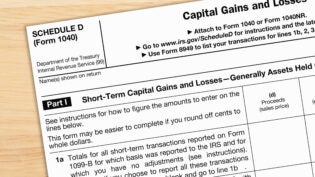Capital vs. Operating Lease: Tax Reporting Implications
By: TaxConnections

We often encounter taxpayers who do not quite fully understand how to report for income tax purposes the lease agreements they have entered into for business use assets, particularly automobiles. Leased property includes real estate, machinery, and other items that a taxpayer uses in his or her business and does not own.
Payments for the use of this property may be deducted as long as they are ordinary, necessary and reasonable. However, special rules and limitations apply to business use of the taxpayer’s rented personal residence and leased automobiles. More information on these topics can be found in:
- Publication 587, Business Use of Your Home
- Publication 463, Travel, Entertainment, Gift, and Car Expenses
This post is intended to provide a general overview on how to record and report capital leases v. operating leases. It also briefly addresses growing concerns of related party lease transactions between Private Foundations and ‘disqualified individuals.’
A capital lease generally is a lease in which the lessor only finances the leased asset, and all other rights of ownership transfer to the lessee. This results in recording the asset as the lessee’s property in its general ledger, as a fixed asset.
The lessee can generally only record the interest portion of a capital lease payment as expense, as opposed to the amount of the entire lease payment in the case of the more common operating lease. The criteria for a capital lease can be any one of the following four alternatives:
- Ownership– The ownership of the asset is shifted from the lessor to the lessee by the end of the lease period; or
- Bargain purchase option– The lessee can buy the asset from the lessor at the end of the lease term for a below-market price; or
- Lease term– The period of the lease encompasses at least 75% of the useful life of the asset (and the lease is non-cancel-able during that time); or
- Present value– The present value of the minimum lease payments required under the lease is at least 90% of the fair value of the asset at the inception of the lease.
If a lease agreement contains any one of the above four criteria, the lessee records the transaction as a capital lease. Otherwise, the lease is recorded as an operating lease. Recording of these two types of leases is as follows.
Capital lease
- The present value of all lease payments is considered to be the cost of the asset, which is recorded as a fixed asset, with an offsetting credit to a capital lease liability account.
- As each monthly lease payment is made to the lessor, the lessee records a combined reduction in the capital lease liability account and a charge to interest expense.
- The lessee also records a periodic depreciation charge to gradually reduce the carrying amount of the fixed asset in its accounting records.
Operating lease
- Record each lease payment as an expense. There is no other entry.
Given the precise definition of a capital lease, the parties to a lease are usually well aware of the status of their lease arrangement before a lease is signed, and typically write the lease agreement so that the arrangement will be clearly defined as either a capital lease or operating lease.
If you are unsure, review the actual signed lease documents as getting this wrong gives opportunity to the authorities to expand the scope of their scrutiny.
Also if you happen to be involved with a Private Foundation be sure to recognize if you are a disqualified person. Be advised that the leasing of property between a disqualified person and a private foundation is an act of self-dealing.
Capital Vs Operating Lease: New ASC 842 Lease Accounting Standards
There are tax obligations but with the recent changes in lease accounting standards, business owners might once again be revisiting the two terms and wondering which is better for their business. In 2018 the new ASC 842 lease accounting standards came into force for public companies, while for year-end companies, the standard was adopted in 2019. So, what’s the difference?
With ASC 840 (the old standard) you and your business could keep a lot more lease items off the balance sheet….known as off-balance sheet transactions. ASC 842 seeks to increase transparency for investors and auditors by ensuring most transactions appear on the balance sheet. So, now you’ll be following the new lease accounting standards you’ll have to divulge your lease relationships a lot more openly. This will of course feed into whether or not you’ll decide to utilize a capital or operating lease.
There are exceptions to the Self-Dealing rules that will get attention in a future post.
General rule of thumb – don’t be like a moth is to a flame.
Author: John Dundon is enrolled with the United States Treasury Department to practice before the IRS, governed by rules stipulated in United States Treasury Circular 230. As a Federally Authorized Tax Practitioner and a tax appeals specialist my Enrolled Agent License #85353 is issued by the United States Treasury. With this license I work for U.S. taxpayers everywhere to resolve tax matters and de-escalate stress about taxes or tax disputes for individuals and corporations with federal and state issues.












